Top 10 Universe’s Mysteries That Science Can’t Explain
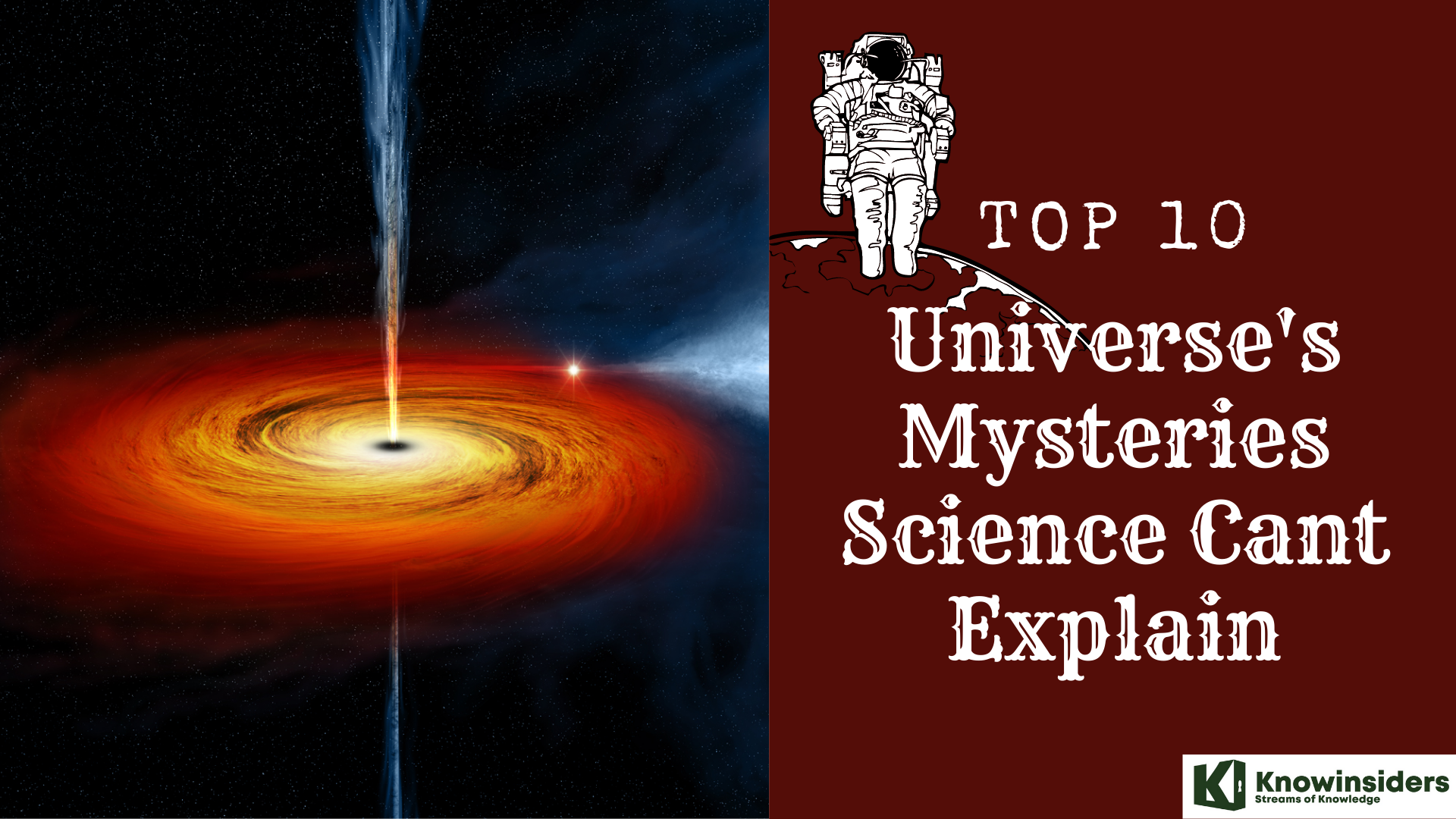 |
| Top 10 Universe's Mysteries that Science Cant Explain |
| Table of Content |
Despite what cable news may tell you, scientists don’t really squabble over if evolution is real (it is) or if the climate is changing faster than can be explained by naturally-occurring phenomena (it is) or if vaccines are regarded as safe and recommended for most children (they are). Sure, there may be fine points within those categories that are debatable, but not to the extent that is commonly described by talking heads on TV. However, that’s not to say that scientists perfectly understand everything about the ways of the Universe.
Here are the universe’s mysteries that even scientists have a hard time to explain.
What are the top 10 universe’s mysteries that even science cant explain?
10. The Big Crunch – The End of the World as We Know It
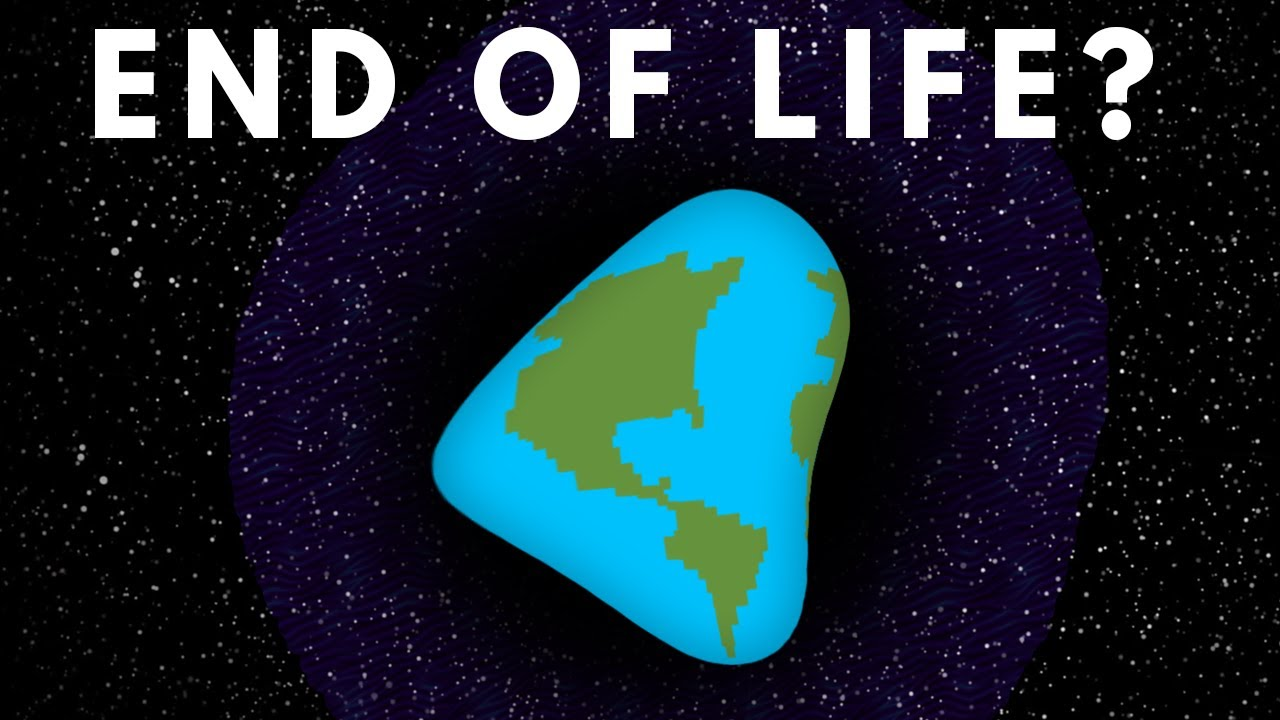 |
| Photo: Life Noogin |
How will the universe end? Humanity has pondered this question for thousands of years. And now science actually has the knowledge and tools to attempt an answer.
Until rather recently, astronomers thought the cosmos would repeatedly expand and collapse in an infinite cycle of cosmic death and rebirth. But the best evidence points to a distant Armageddon filled with more existential dread than the Book of Revelation. Trillions of years in the future, long after Earth is destroyed, the universe will drift apart until galaxy and star formation ceases. Slowly, stars will fizzle out, turning night skies black. All lingering matter will be gobbled up by black holes until there’s nothing left. Finally, the last traces of heat will disappear.
Rather than meeting its end through fire and brimstone, the cosmos will likely succumb to “heat death.” Astronomers call it the Big Freeze.
In 1922, Russian physicist and mathematician Alexander Friedmann derived a famous set of equations aptly named the Friedmann equations. These calculations showed that our universe’s destiny is determined by its density, and it could either expand or contract, rather than remain in a steady state. With enough matter, gravity would eventually halt the cosmos’ expansion, causing it to come crashing back inward.
In the 1960s and 1970s, when astronomers added up all the matter in the known universe, they calculated there was enough mass that the cosmos should ultimately collapse to an infinitely dense state, or perhaps even a gargantuan black hole.
Some speculated that once compressed into an infinitely small point — the Big Crunch — the universe would kickstart yet another expansion, or Big Bounce.
In the 1970s and 1980s, physicist John Wheeler, who helped coin the term black hole, became a leading proponent of the Big Crunch. To him, it was an obvious fate. A revolution in understanding black holes was underway, and Wheeler saw each one as an “experimental model” of the universe’s final state.
But Wheeler’s Big Crunch fondness was partially born from aesthetics, he admitted. It was easy to picture.
9. The Multiverse
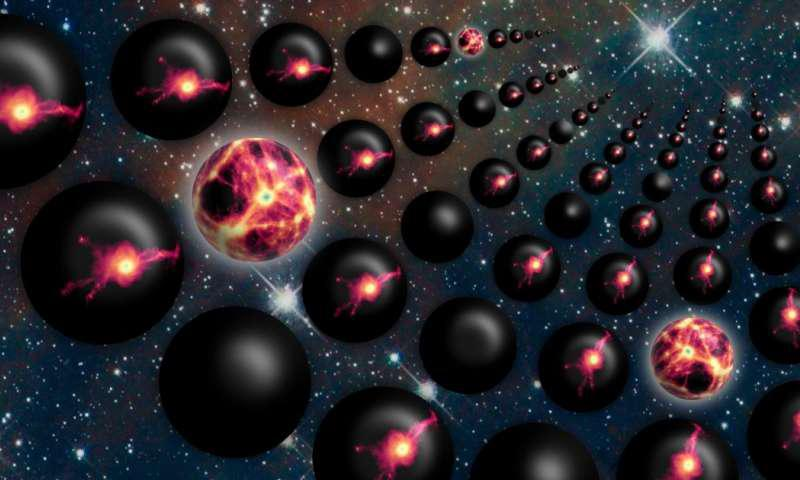 |
| Photo: Multiverse |
Multiverse theory suggests that our universe, with all its hundreds of billions of galaxies and almost countless stars, spanning tens of billions of light-years, may not be the only one. Instead, there may be an entirely different universe, distantly separated from ours — and another, and another. Indeed, there may be an infinity of universes, all with their own laws of physics, their own collections of stars and galaxies (if stars and galaxies can exist in those universes), and maybe even their own intelligent civilizations.
It could be that our universe is just one member of a much grander, much larger multitude of universes: a multiverse.
Many scientists have tried to find more physical, hard evidence for the multiverse's existence. For example, if a neighboring universe happened to be close to ours long ago, it may have collided with our universe, creating a detectable imprint. That imprint could be in the form of distortions in the cosmic microwave background (the light left over from when the universe was a million times smaller than it is today) or in strange galaxy properties in the direction of the collision, according to the Early Universe blog published by University College London.But all of these types of searches have come up empty, so the multiverse remains hypothetical.
Perhaps the most mind-bending implication of the multiverse is the existence of doppelgängers. If there really are an infinity of universes but a finite number of ways to arrange particles in any individual universe, then the same patterns are bound to be repeated, eventually. That would mean that at some incredible (but finite!) distance, there would be an exact copy of you reading an exact copy of this article. And because there would be an infinite number of universes, there would be an infinite number of these exact scenarios all happening simultaneously, according to the Institute of Physics.
8. Cosmic Rays
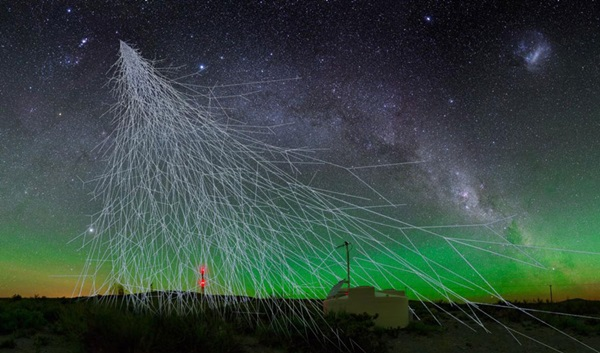 |
| Photo: Astronomy Magazine |
Cosmic rays are high-energy protons and atomic nuclei that move through space at nearly the speed of light. They originate from the Sun, from outside of the Solar System in our own galaxy, and from distant galaxies. Upon impact with Earth's atmosphere, cosmic rays produce showers of secondary particles, some of which reach the surface; although the bulk is intercepted by the magnetosphere or the heliosphere.
Cosmic rays were discovered by Victor Hess in 1912 in balloon experiments, for which he won the 1936 Nobel Prize in Physics.
Direct measurement of cosmic rays, especially at lower energies, has been possible since the launch of the first satellites in the late 1950s. Particle detectors similar to those used in nuclear and high-energy physics are used on satellites and space probes for research into cosmic rays. Data from the Fermi Space Telescope (2013) have been interpreted as evidence that a significant fraction of primary cosmic rays originate from the supernova explosions of stars. Based on observations of neutrinos and gamma rays from blazar TXS 0506+056 in 2018, active galactic nuclei also appear to produce cosmic rays.
Up high in the stratosphere, cosmic rays can affect both human beings and electronics. Astronauts and aircraft crew are exposed to higher levels of radiation than the average person because of the presence of cosmic rays – although still not enough to be a major risk.
But electronics are the real potential victims here. Very rarely, a cosmic ray particle with enough energy can go straight into an electronic system, causing serious damage. The high energy particles can disrupt electronic data, leading to system crashes. And in an increasingly digital world, that’s not good news.
We’re only just beginning to learn about the potential impact that cosmic rays could have, and the race is on to find a solution.
7. Space Roar
 |
| Photo: Getty Images |
In 2006, scientists at NASA's Goddard Space Flight Center sent a machine called ARCADE into space on a giant balloon, in search of radiation from the universe's earliest stars. ARCADE (Absolute Radiometer for Cosmology, Astrophysics, and Diffuse Emission) carried seven sensors that picked up electromagnetic radiation like radio waves. The plan was to lift it far enough up to prevent the Earth's atmosphere from interfering. Then, the finely-tuned instrument could detect faint radio signals from ancient stars.
Instead, ARCADE detected a huge amount of radio noise—six times louder than scientists had predicted—which has since come to be known as the "space roar." And while there are some theories, we still don't know what's causing it.
According to Dale Fixsen, a University of Maryland research scientist and a member of the ARCADE team, NASA had built devices that detected radio noise before. These worked by looking at one point in the sky, and then at another nearby one for contrast. These instruments were useful for detecting radio-emitting galaxies and supernovas, because they measured the difference between two points. But they couldn't detect the roar.
On the other hand, theorists think that we've detected almost all the sources of this radiation outside our galaxy. And we know that none of these sources is causing the "roar."
According to Fixsen, there are a few possible explanations. First, the "roar" could be coming from the earliest stars. The first stars didn't have any dust—because the first dust in the universe was formed within those stars. This could have let those stars create a lot of synchrotron radiation, without a correspondingly high amount of infrared.
Second, the radiation might be coming from gases in large clusters of galaxies—Fixsen says that it would be difficult for the instruments we've used up until now to detect radiation from these.
Third, it could be coming from dim, but extremely plentiful, radio galaxies. Individually, they would be too quiet for us to detect, but en masse they might be loud enough to create the "roar."
6. Black Holes
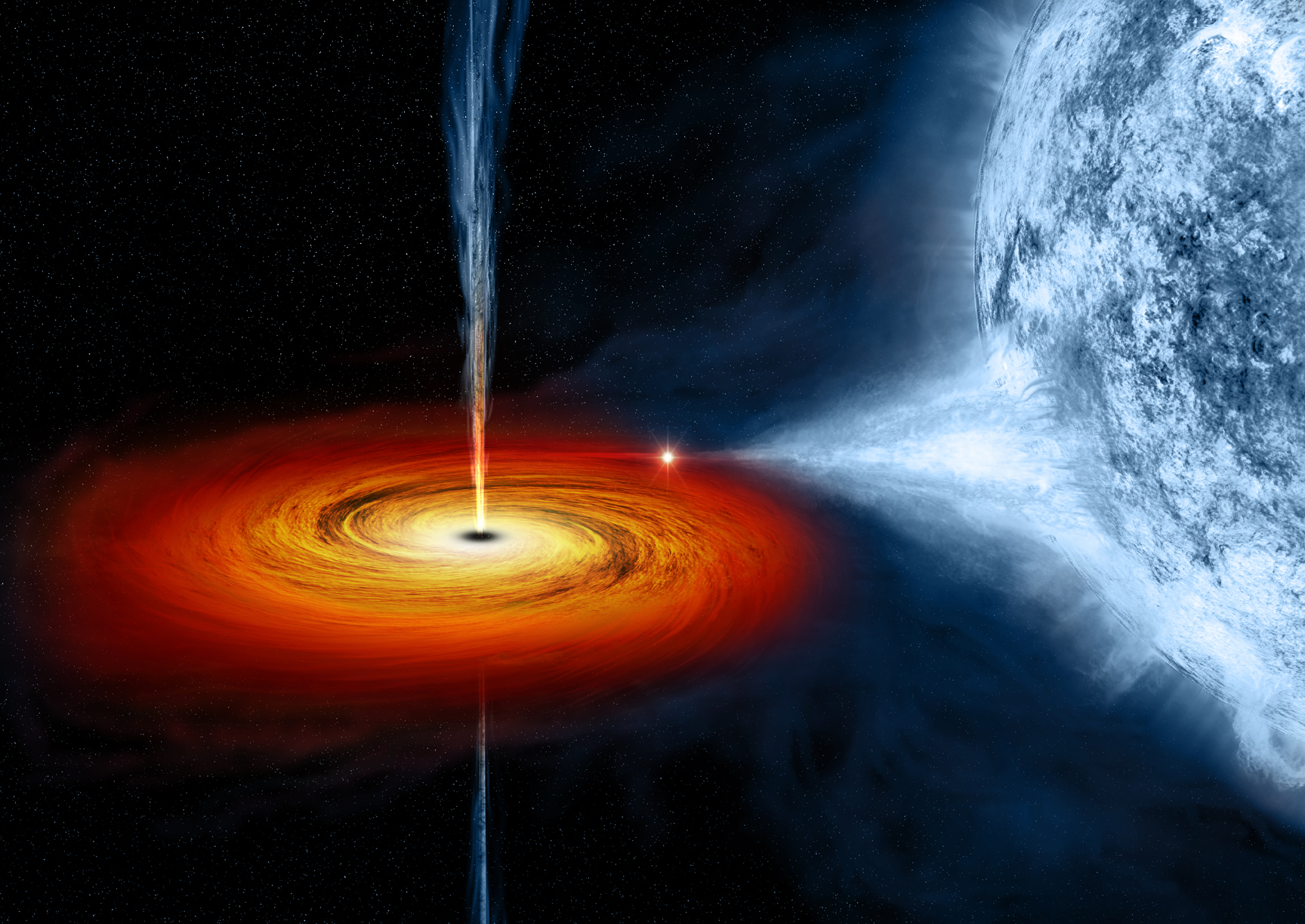 |
| Photo: NASA |
A black hole is a place in space where gravity pulls so much that even light can not get out. The gravity is so strong because matter has been squeezed into a tiny space. This can happen when a star is dying.
Because no light can get out, people can't see black holes. They are invisible. Space telescopes with special tools can help find black holes. The special tools can see how stars that are very close to black holes act differently than other stars.
Black holes can be big or small. Scientists think the smallest black holes are as small as just one atom. These black holes are very tiny but have the mass of a large mountain. Mass is the amount of matter, or "stuff," in an object.
Another kind of black hole is called "stellar." Its mass can be up to 20 times more than the mass of the sun. There may be many, many stellar mass black holes in Earth's galaxy. Earth's galaxy is called the Milky Way.
The largest black holes are called "supermassive." These black holes have masses that are more than 1 million suns together. Scientists have found proof that every large galaxy contains a supermassive black hole at its center. The supermassive black hole at the center of the Milky Way galaxy is called Sagittarius A. It has a mass equal to about 4 million suns and would fit inside a very large ball that could hold a few million Earths.
Experts think there could be up to 100 million black holes in our galaxy alone, and these monsters can grow to become billions of times more massive than the sun. What’s more, at the centre of most galaxies, including our own, lurks a super-massive black hole.
But we don’t know what happens when objects pass through the centre. They might become ‘spaghettified’: stretched apart into long strings of matter; they could even be transported through a short-cut to a different part of our universe. Spooky.
5. The Fermi Paradox
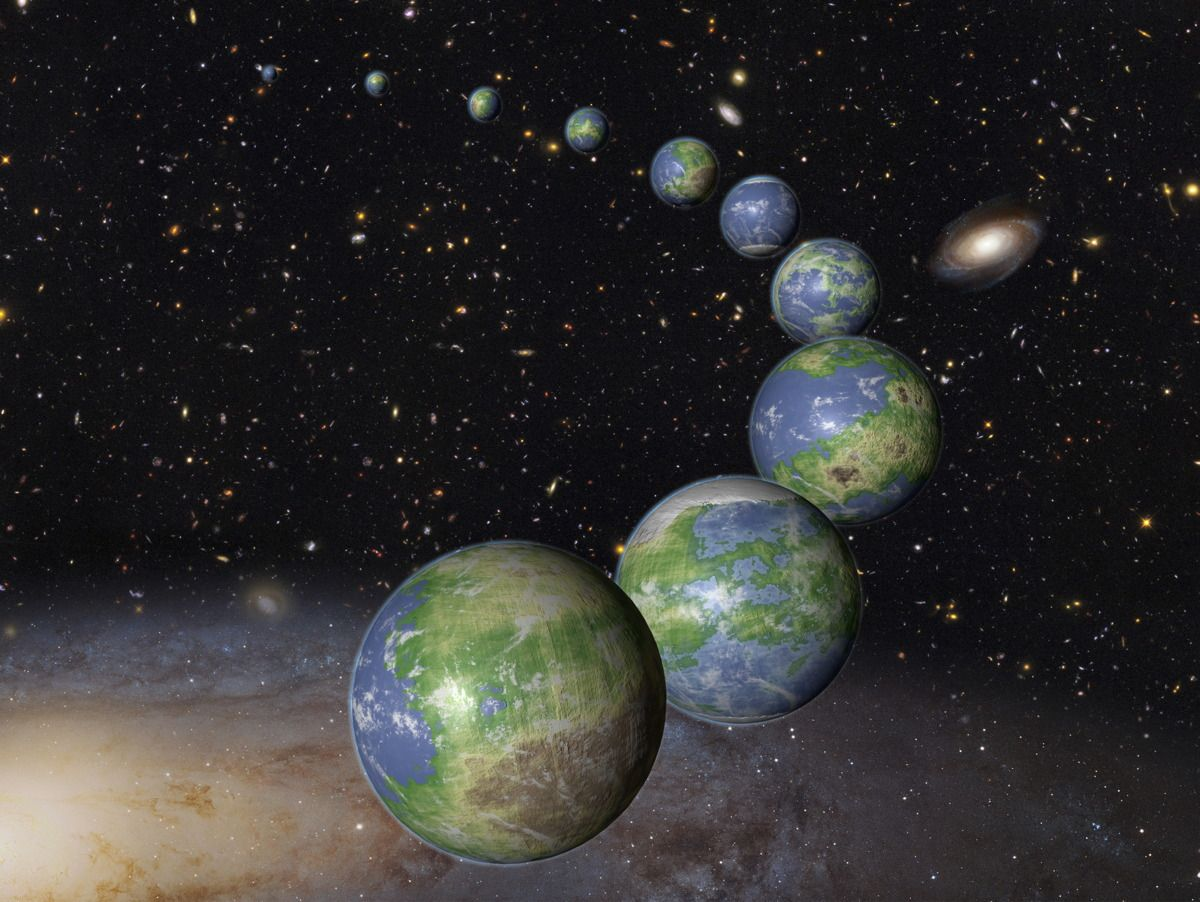 |
| Photo: Getty Image |
The Fermi Paradox seeks to answer the question of where the aliens are. Given that our star and Earth are part of a young planetary system compared to the rest of the universe — and that interstellar travel might be fairly easy to achieve — the theory says that Earth should have been visited by aliens already.
As the story goes, Italian physicist Enrico Fermi, most famous for creating the first nuclear reactor, came up with the theory with a casual lunchtime remark in 1950. The implications, however, have had extraterrestrial researchers scratching their heads in the decades since.
"Fermi realized that any civilization with a modest amount of rocket technology and an immodest amount of imperial incentive could rapidly colonize the entire galaxy," the Search For Extraterrestrial Intelligence (SETI) Institute in Mountain View, California, said on its website. "Within ten million years, every star system could be brought under the wing of empire. Ten million years may sound long, but in fact it's quite short compared with the age of the galaxy, which is roughly ten thousand million years. Colonization of the Milky Way should be a quick exercise."
Fermi reportedly made the initial remark, but he died in 1954. Publication fell to other people, such as Michael Hart, who wrote an article titled "An Explanation for the Absence of Extraterrestrials on Earth" in the Royal Astronomical Society (RAS) Quarterly Journal in 1975. (Some say this is the first such paper to explore the Fermi paradox, although this claim is a bit hard to prove.)
4. Antimatter
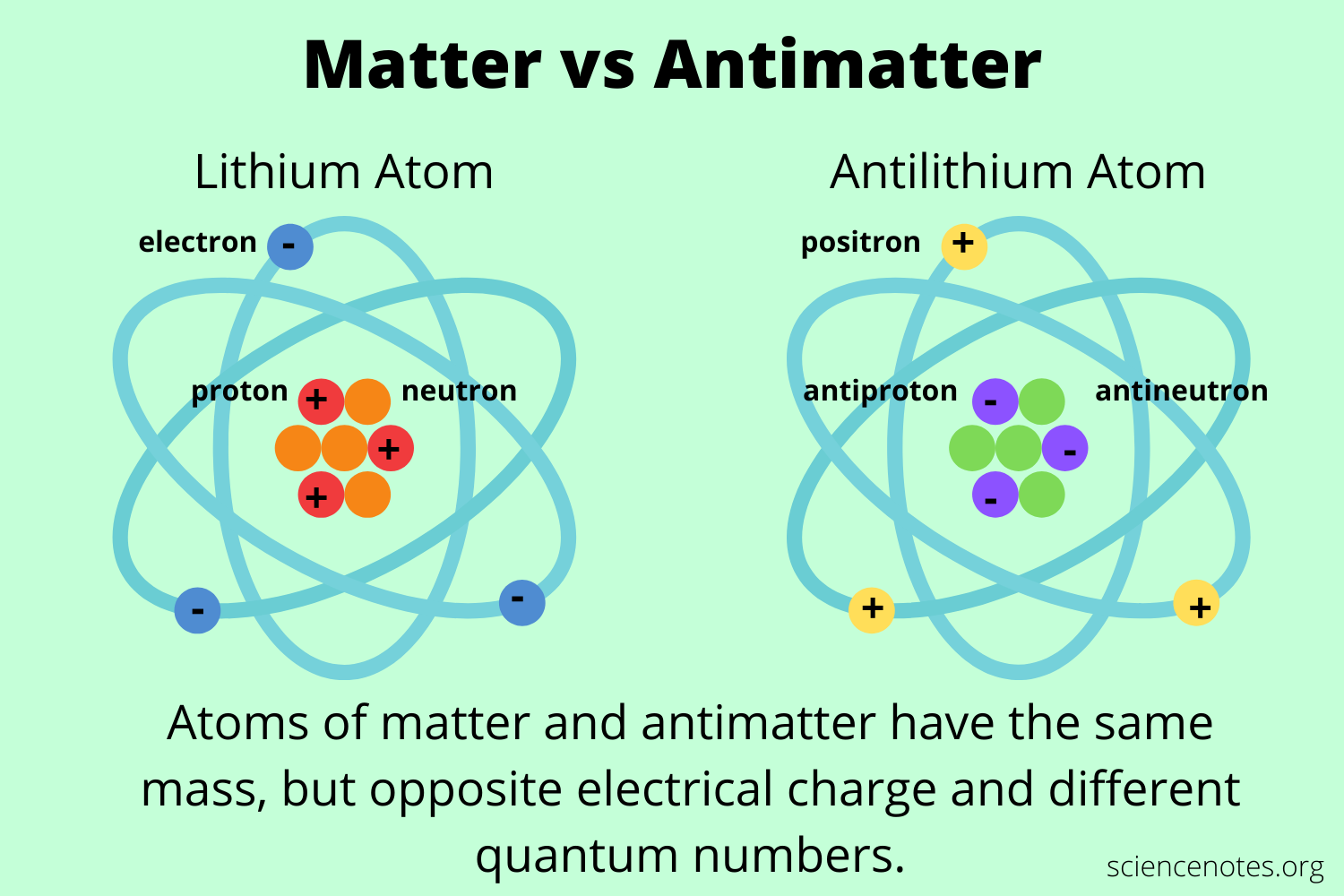 |
| Photo: Science Notes |
Antimatter is the opposite of normal matter. More specifically, the sub-atomic particles of antimatter have properties opposite those of normal matter. The electrical charge of those particles is reversed. Antimatter was created along with matter after the Big Bang, but antimatter is rare in today's universe, and scientists aren't sure why.
To better understand antimatter, one needs to know more about matter. Matter is made up of atoms, which are the basic units of chemical elements such as hydrogen, helium or oxygen.
The universe of an atom is complex, as it is full of exotic particles with properties of spin and "flavor" that physicists are only just beginning to understand. From a simple perspective, however, atoms have particles that are known as electrons, protons and neutrons inside of them. Each element has a certain number of protons in each atom: Hydrogen has one proton; helium has two protons; and so on.
Antimatter particles are created in ultra high-speed collisions. In the first moments after the Big Bang, only energy existed. As the universe cooled and expanded, particles of both matter and antimatter were produced in equal amounts. Why matter came to dominate is a question that scientists have yet to discover.
One theory suggests that more normal matter was created than antimatter in the beginning, so that even after mutual annihilation there was enough normal matter left to form stars, galaxies and us.
3. Quantum Entanglement
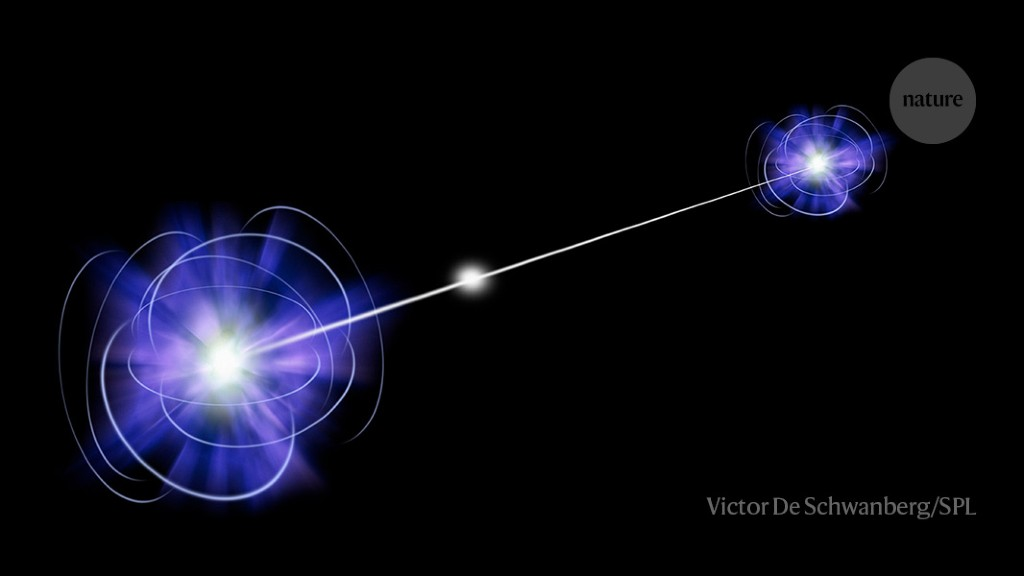 |
| Photo: Victor De Shwanberg |
Famously dubbed ‘spooky action at a distance’ by a dubious Albert Einstein, quantum entanglement is the phenomenon by which two particles in totally different parts of the universe can be linked to one another, mirroring the behaviour and state of their partner.
Quantum entanglement is a bit of a nuisance for classical physics, because it breaks some fundamental laws that we previously thought unbreakable. For particles to be connected across such vast distances, they must be sending signals to one another that travel faster than the speed of light: a feat previously considered impossible. What’s more, objects are only supposed to be affected by their surroundings; the notion of a particle being affected by something happening on the other side of the universe is just...strange.
Nonetheless, studies suggest that quantum entanglement does indeed exist. And even though we don’t understand it, we could still potentially use it. Because of its spooky characteristics, entanglement could eventually become the bedrock of next-generation computing and communications. So watch this space.
2. Dark Energy
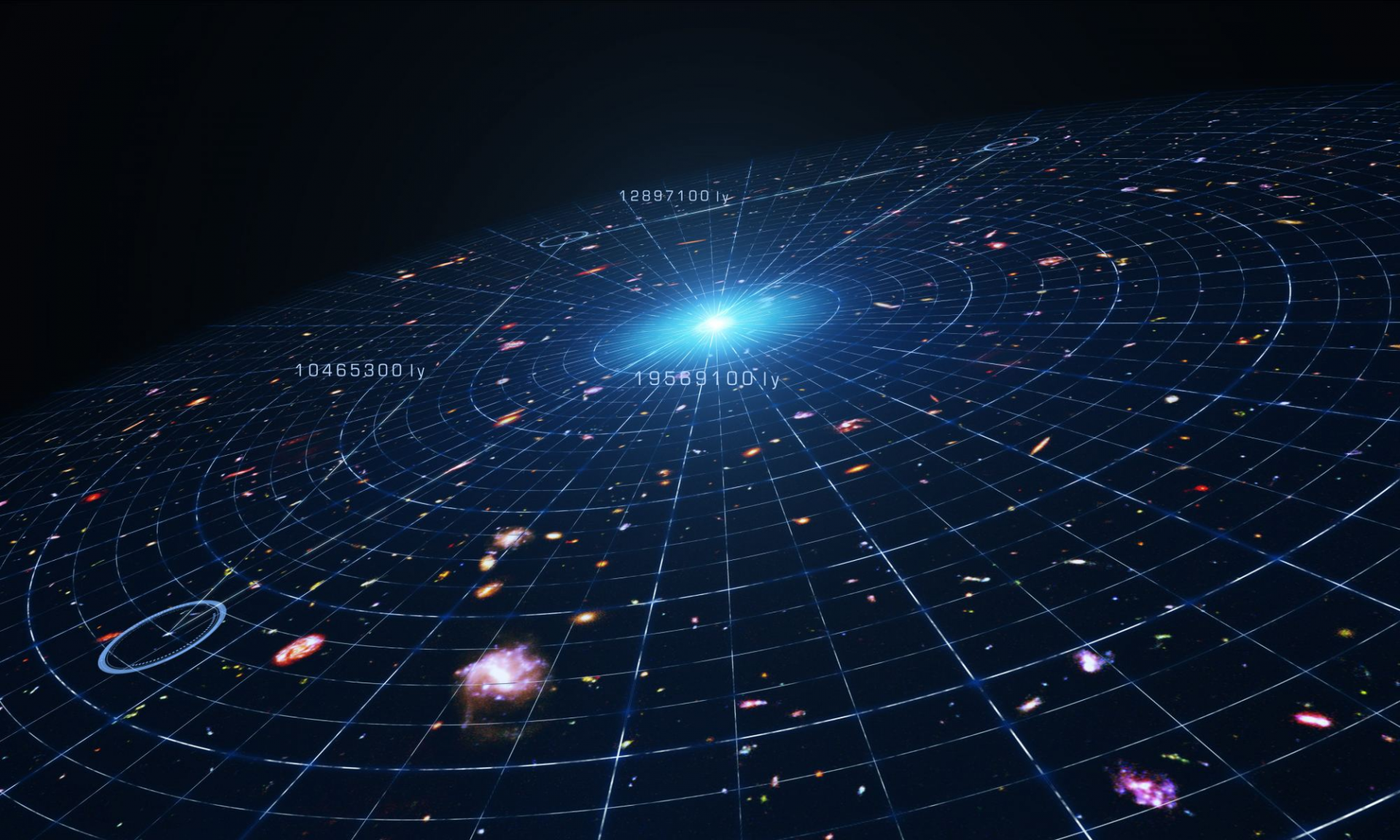 |
| Photo: Universe Today |
Dark energy is the name given to the mysterious force that’s causing the rate of expansion of our universe to accelerate over time, rather than to slow down. That’s contrary to what one might expect from a universe that began in a Big Bang. Astronomers in the 20th century learned the universe is expanding. They thought the expansion might continue forever, or eventually – if the universe had enough mass and therefore enough self-gravity – reverse and cause a Big Crunch. Now, in early 21st century cosmology, that idea has evolved. The universe is seen as expanding faster today than billions of years ago. What could be causing the rate of expansion to increase? Astronomers now sometimes speak of a repulsive force as a possible way to understand it.
Up until the late 1990s, most cosmologists believed the universe did not have enough mass to cause a Big Crunch. In particular, data acquired by the 2dF Galaxy Redshift Survey and the Sloan Digital Sky Survey seemed to confirm the universe would expand forever, albeit at an ever-slowing rate as the universe’s own mass and own gravity tried to pull it back.
The first indication of something revolutionary about to be discovered came in 1998 during a survey of Type 1A supernovae. These massive explosions of dying giant stars are extremely useful to astronomers because they always output the same amount of light, and can therefore be used as so-called “standard candles” to calculate distances in the cosmos. This is a very simple idea. Think of fireflies at night: they all shine with the same instrinsic brightness. By measuring how bright they are from where you are, you can calculate their distance.
The 1998 survey was being carried out by two international group of astronomers including Americans Adam Riess and Saul Perlmutter, and Brian Schmidt in Australia. Using eight telescopes worldwide, their aim was to use the distance of Type 1A supernovae to calculate the expansion rate of the universe, known as the Hubble Constant (although in reality, as the rate of expansion of the universe varies with time, it is technically not a constant).
The results of the survey were astonishing. Distant supernovae which exploded when the universe was only 2/3 of its current age were much fainter than they should have been, and were thus much further away. The implication of this was that the universe had expanded much faster than it should have done, if current ideas were correct.
1. Dark Matter
 |
| Photo: Live Science |
Planets, stars, asteroids, galaxies – the things that we can actually see – make up less than 5% of the total universe. Scientists think another ~25% is a strange substance called dark matter: we can’t see it, we don’t understand it, but we’re pretty sure it’s out there because everything moves to its gravitational tune.
Dark matter theory has done a reasonable job at predicting many of these measurements, which is why it is well-respected in the scientific community. But dark matter is still an unconfirmed model. All evidence of its existence so far is indirect. If dark matter exists, we should be able to directly observe interactions of dark matter as it passes through the Earth and we might be able to make dark matter in large particle accelerators, like the Large Hadron Collider. And yet neither approach has been successful.
In addition, dark matter should agree with all, not just many, astronomical observations. While dark matter is the most successful model so far, it is not completely successful. Dark matter models predict more dwarf satellite galaxies surrounding big galaxies like the Milky Way than are actually detected. Although more dwarf galaxies are being found, there are still too few compared to dark matter's predictions.
Another big, open question is how dark matter affects the relationship between the brightness of galaxies and their rotational speeds. This relationship, which was first presented in 1977, is called the Tully-Fisher relation, and it has shown numerous times that a galaxy's visible mass correlates well with its rotational speed.
 10 Biggest Secrets And Mysteries In The World Of All Time 10 Biggest Secrets And Mysteries In The World Of All Time The world has some of the best mysteries, and many of them still remain unsolved. Here is top 10 biggest secrets and mysteries of all ... |
 Top 10 Most Intelligent Animals On Planet Top 10 Most Intelligent Animals On Planet There are a lot of beautiful animals on our planet, and some of them demonstrate extraordinary abilities. Check out the 10 most intelligent animals in ... |
 Top 10 Best Educated Hollywood Actors Top 10 Best Educated Hollywood Actors There are several actors in Hollywood who have attained world acclaim for their superior acting skills and the ability to entertain world audiences. Check out ... |
 Top 10 Best Educated Hollywood Actresses Top 10 Best Educated Hollywood Actresses Some of the celebrities of hot and sexy women have achieved a high level of education. Check out right below the 10 best Hollywood actresses ... |


























